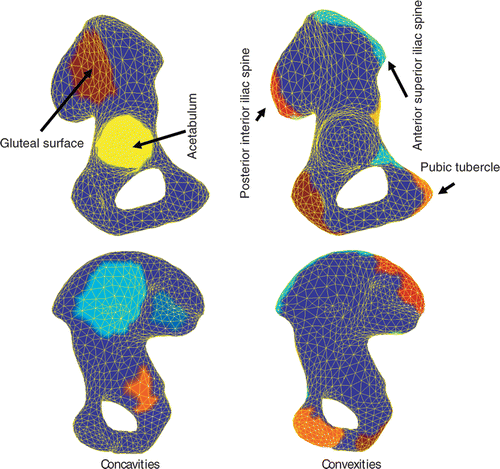Figures & data
Table I. Parameters and ranges for the sensitivity analysis.
Table II. Features of the validation data.
Figure 1. (a) and (b) The three curvatures (from left to right: mean, Gaussian, and non-linear kc) mapped on the pelvic bone mesh with 3k faces (a) and 20k faces (b). (c) and (d) Corresponding curvature values. For clarity, the ordinate range was set from −2 to +2.
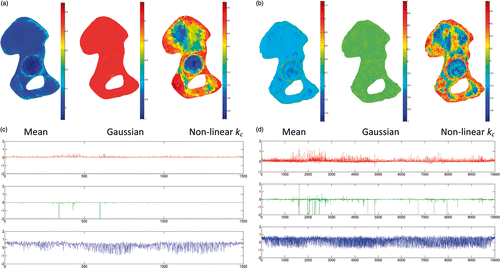
Figure 2. The three mapped curvatures (mean, Gaussian, and non-linear kc) for the femur mesh (3k and 2k faces).

Figure 3. Histograms of the three curvature distributions (pelvic bone) computed for the 3k (a), 10k (b), and 20k (c) surface resolutions.
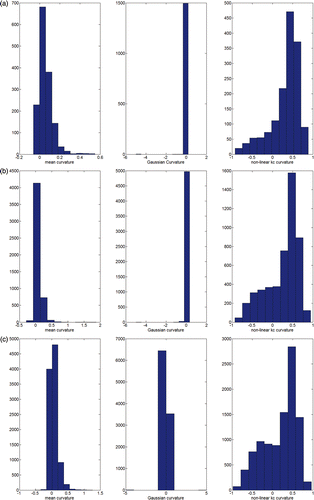
Figure 4. Curvature kc, mean-shifted curvature with 1-ring neighborhood, and mean-shifted curvature with 2-ring neighborhood for 3k faces (a), 10k faces (b), and 20k faces (c).
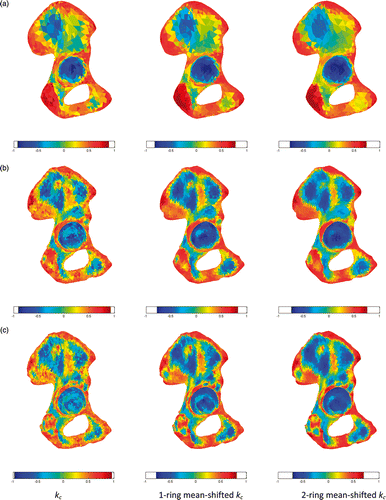
Figure 5. Curvature kc, mean-shifted curvature with 1-ring neighborhood, and mean-shifted curvature with 2-ring neighborhood for 3k faces (a), 10k faces (b), and 20k faces (c).
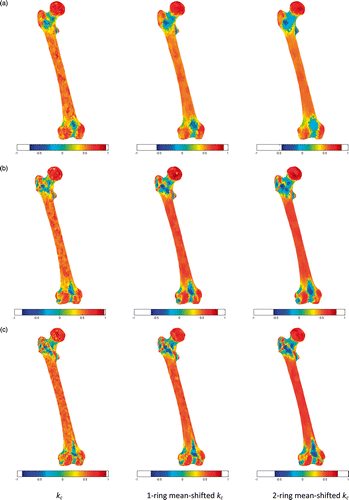
Table III. Number of clusters for ridge (R) and pit (P) regions as a function of the b value, the kernel function, and the surface resolution obtained after computing the 1-ring MS curvature, automatic curvature thresholding, and vertex clustering.
Table IV. Median and range values (25th and 75th percentiles) for the ridge and pit cluster distributions, obtained from the pelvic bone processing, computed across the 20 bone models. For clarity, floating point numbers are rounded to the nearest integer.
Table V. Median and range values (25th and 75th percentiles) for the ridge and pit cluster distributions, obtained from the femur processing, computed across the 20 bone models. For clarity, floating point numbers are rounded to the nearest integer.
